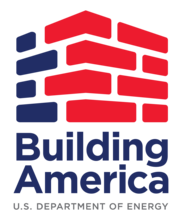The White House today announced a proposal that new homes purchased using Federal Housing Administration (FHA) or U.S. Department of Agriculture (USDA) mortgages must be built to the standards of the 2021 International Energy Conservation Code (IECC). Current FHA/USDA mortgage standards require compliance with the 2009 IECC. This proposed standard update is a giant step forward in improving the energy performance of new residential construction in the United States. About 170,000 homes are purchased each year using these government mortgage products, which means 170,000 families will buying homes that are potentially 35 percent more important efficient than the status quo.
Details »Insulation Institute Blog
Posts By: Stacy Fitzgerald-Redd
Realtor Report Shows Energy Efficiency Gets Noticed
The National Association of Realtors (NAR) has just released its 2023 REALTORS and Sustainability Report – Residential which shows that the majority of these real estate professionals (63 percent) find promoting a home’s energy efficiency very or somewhat valuable. More than 2,000 realtors participated in the survey, and their opinions of energy efficiency are driven largely by consumer interests in sustainability, according to Jessica Lautz, NAR’s deputy chief economist and vice president of research.
Details »Providence Homes Wins Sustained Excellence Award
Jacksonville area home builder Providence Homes was recently awarded the ENERGY STAR partner of the Year Sustained Excellence Award from the U.S. Environmental Protection Agency (EPA) and the U.S. Department of Energy (DOE) for the seventh time.
Details »DOE Issues RFP for Community-Based Retrofit Teams
On behalf of the U.S. Department of Energy’s (DOE) Building America Program, the National Renewable Energy Laboratory (NREL) issued a request for proposal (RFP) for multi-disciplinary expert teams to address the technical challenges of decarbonizing the U.S. residential housing stock.
Details »Trading Efficiency for Lower Initial Costs
While the federal government is ramping up measures that increase building energy efficiency, home builders in a handful of states, including North Carolina, are pushing back against more stringent building energy efficiency measures. But what is in the best interest of homeowners?
Details »Time to Optimize Thermal Performance in 100M Homes
America has more than 100 million leaky homes that are prime for energy efficiency and electrification upgrades, including air sealing and insulation. Without serious engagement by utilities and contractors to address the issue of thermal leakage, the lofty goals the Biden Administration has set for carbon reduction and electrification will not be achieved, says Rick Barnett, a green builder and remodeling contractor. Barnett has been an advocate for thermal envelope efficiency and green building for more than 30 years.
Details »Webinar: How 3E Plus Can Help Schools Apply for Retrofit Grants
The U.S. Department of Energy (DOE) Office of State and Community Energy Programs has issued a grant funding opportunity announcement (FOA) for public K-12 schools. These grants are available to make energy improvements that result in direct reduction to school energy costs, increase energy efficiency, and lead to improvements in teacher and student health, including indoor air quality. Applicants must submit a baseline energy needs assessment to qualify.
Details »It’s the Order of Operations with Heat Pumps-Part 2
Order of Operations Matters with Heat Pumps
Way back in the late 2000s, when I first took my BPI Building Analyst training and got into home performance, one of the first lessons I can remember learning was the importance of working through the proper order of operations. Things like “always seal the high and low bypasses first” and “air seal then insulate because the pressure boundary and thermal boundary must align.”
Details »








